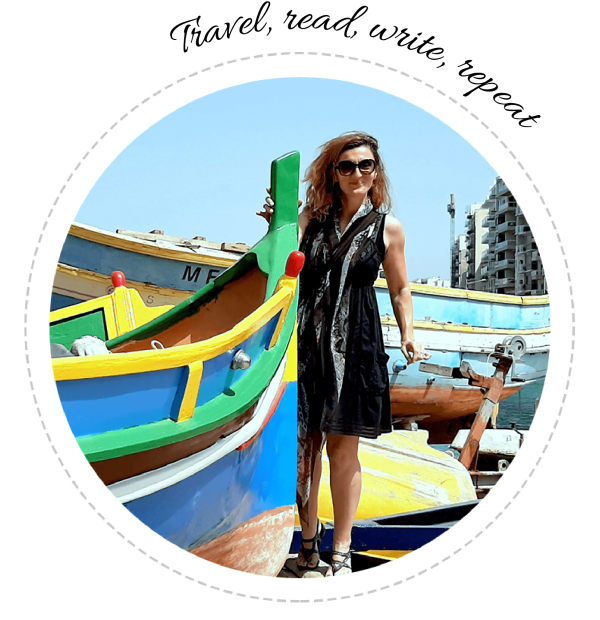
If you need a freelance travel writer or you would like to see your country, city, flight, etc., presented on the blog, drop me an email.
Find our more on Freelance Travel Writer page.
*I was fortunate enough to travel to Syria and see the country in 2008, three years before the war broke out. This homage to Syria is a reminder, the story about the country with immense cultural heritage, posted here with the wholehearted wish for peace to be restored and cities rebuilt.
Palmyra Temple was one of a kind. This 2,000-year-old sacred place was unfortunately destroyed during the last war in Syria.
Driving through the desert before the war, we couldn’t even guess what was yet to come at the end of our Syrian journey. Although I heard of the city „somewhere in the desert“ where the nicely preserved Roman town lies and had seen a few photos before my trip when reading about the place I was going to visit, nothing could have prepared me for the astonishing sight that emerged before us when the road curved behind one of the dunes.

The town of Palmyra leaves you with your jaw down when you finally get a hold of those columns coming out of the sand and the ancient town expanding over the desert valley that goes towards a lush oasis.

I didn’t even come close enough nor I could yet say that my feet stepped onto this two millennia plateau but I was already amazed by the sight. Just as someone, for that occasion only, has uncovered half of the city, just then, a few hours before I came. That is how unbelievable the sight was!
Mentioned for the first time in the archives of Mari in the 2nd millennium BC, the city of Palmyra was founded, they say, by King Solomon.
The name is the Greek translation of the Aramaic original Tadmor, which means „the palm tree“. Quite expected when having in mind that in the middle of the vast region of sand, there was a small town’s oasis.
For a long time, Palmyra was a lively stop on the caravan route for travelers and merchants crossing the desert, so much so that it earned the nickname of the Bride of the Desert.

The city markets traded spices, precious stones, metals, and luxurious fabrics with the final destinations being Egypt, Spain, or Gaul.
Palmyra reached its maximum splendor during the rule of a woman who, according to her importance and political influence, can be compared to Cleopatra, the queen of Egypt. The famous Queen of Palmyra was Zenobia. She was defeated by Roman Emperor Aurelian who razed the city in 272 AD and built another, Roman town instead. Later on, Palmyra was taken by the Arabs.

The first thing I noticed when coming closer to the ruins of the city was the sight of the Great Colonnade and then on the right, there were huge walls of one of the temples.
Judging by its size, it wasn’t hard to guess that this was a relic dedicated to the supreme god – the Aramaic god called Baal. This was the most important building in Palmyra. (Until it got destroyed during the recent civil war.)

The name of Baal in the Phoenician language meant simply „master“ or „lord“. He was the most vigorous of all gods and was also known as the Cloud Rider, All-Powerful, and Lord of the Earth. In Greek mythology, this god was associated with Cronus, in Roman with Saturn.
Building the temple lasted for many centuries. Additional premises and objects would have been added from time to time, and the ruins that could be seen in 2008 dated from the Hellenistic age. Construction of the temple was finally completed in the mid-2nd century AD and its destruction began a little more than a hundred years later in 273 by the hand of Aurelian during the second conquest of the city.

The courtyard of the Palmyra Temple was closed in by a wall, originally 11 meters in height. Porticoes with double rows of Corinthian columns opened from here. Corbels at about half of the height of the columns originally supported statues of citizens who had donated funds to the construction of the Palmyra Temple.

The shrine was enclosed and accessible only to the priests. Every year, on the day corresponding to April 7th of the modern calendar, priests celebrated the ceremony in honor of the god Baal. For seven days, worshipers from the entire surrounding territory flocked to Palmyra Temple bearing animals to be sacrificed to the supreme god. Animals were herded into the Palmyra Temple through a passageway under the western side and around the shrine seven times. On the last day, after the seventh turn, animals were led to the altar.

As the decoration in the north chamber of the shrine showed, the temple was dedicated not to Baal alone, but also to Yarhibol, god of the Sun, and Aglibol, goddess of the Moon. The ceiling was decorated with a relief of the seven planetary divinities and zodiac signs.
This was a great monument to ancient times that, unfortunately, doesn’t exist anymore…
Next: ANCIENT PALMYRA
The full Homage to Syria SERIES

If you need a freelance travel writer or you would like to see your country, city, flight, etc., presented on the blog, drop me an email.
Find our more on Freelance Travel Writer page.
I am looking forward to working with you.




21 responses
This is fascinating. It is a blooming pity that such wonderful places of heritage have been destroyed.
Can’t tell you how much I cherish these photos now! And it has been hard to grasp that this temple is no longer there, such a shame. Thanks!
It is an experience to cherish even more thus.
Wow, it’s really quite sad reading this and thinking about what is being lost to war. It’s so sad what is happening there. Thanks for sharing this and putting it out there again, I found it fascinating. Maybe one day the country can heal and open up again, but I think that is a long way off.
Fingers crossed! As soon as there’s peace, there’ll be hope for the country to maybe open in the future. Hopefully, it will happen soon. Thanks, Matt!
This place looks beautiful and definitely somewhere I would like to have seen in person. It’s astonishing to think this is no longer there! Thanks for sharing, more people need to know what cultural gems this country once held.
So glad you enjoy the series, had in mind the same thing when thinking of posting. And I don’t even know what to say about the Baal Temple!
I’m really enjoying this series of articles on Syria. As I’ve said previously, what has happened to the country is a tragedy. The ruins of ancient civilisations have been squandered.
Thanks, Mike, you are so right!
Wow.This is really a good post and article. I have no chance of traveling to Syria due to the current situation in that country.Is Syria similar to Iran?By the looks of your picture, it really looks the same.
Never been, Iran is on my bucket list and can’t wait to go! 🙂 But, according to all the things I’ve read and seen about the country, I’d say that there are a lot of differences. Geography is different, their history etc, but than again, I might we wrong, still haven’t been. Anyway, I’ll let you know when I come back from Iran one day! 😉 Thank you!
You are very fortunate be there, I have this desire to visit Middle East as a tourist but because of what’s happening not too sure when this dream can happen. I got a chance to visit UAE, hopefully another country in that region because that area offers a different kind of culture that still be enriching to everyone.
UAE is totally different from Jordan, Syria, Lebanon etc. In my opinion, the real feel of the Middle East actually is somewhere in these three countries, when it comes to the Arab part of the region. The whole area is turbulent nowadays, but I think that you can still visit Jordan and Lebanon. And try to do so, you won’t regret it – beautiful part of this amazing world! 🙂
There is so much of history in these areas . I really wish that normalcy is restore soon before some one does something stupid and destroys the heritage buildings.
You are so right, a lot of lives are already lost, a lot of heritage sites already destroyed. It should end! Thanks, Nisha.
This is so unexplored and lovely. I love the whole heritage but here… Especially the temple. In some ways these sites remind me of the ruins of Hampi. Have u seen those?
Indian Karnataka? Didn’t see it in person, but I’ve seen photos of it and I can understand why it reminds you of Hampi. Might have even seen it on your blog? 🙂
magnificent put up, very informative. I ponder why the other experts of this sector don’t realize this. You must continue your writing. I am sure, you have a huge readers’ base already!
Thanks, you are very kind. 🙂
This is post May I ask you to contact us so that we can talk? Can I write to you directly. It’s so good that i’m going follow you!
Yes, I have already answered. You can email me at danijela@glimpses-of-the-world.com or through the Contact form on the blog. Looking forward to hearing from you. 🙂